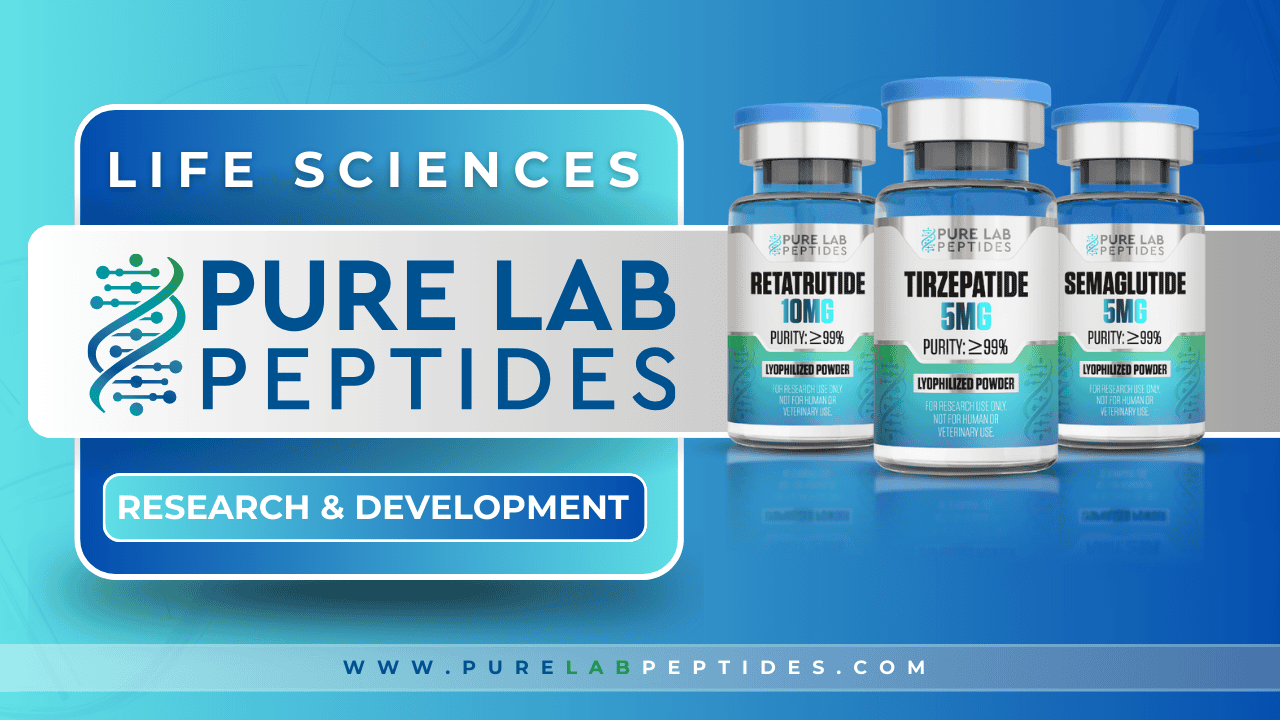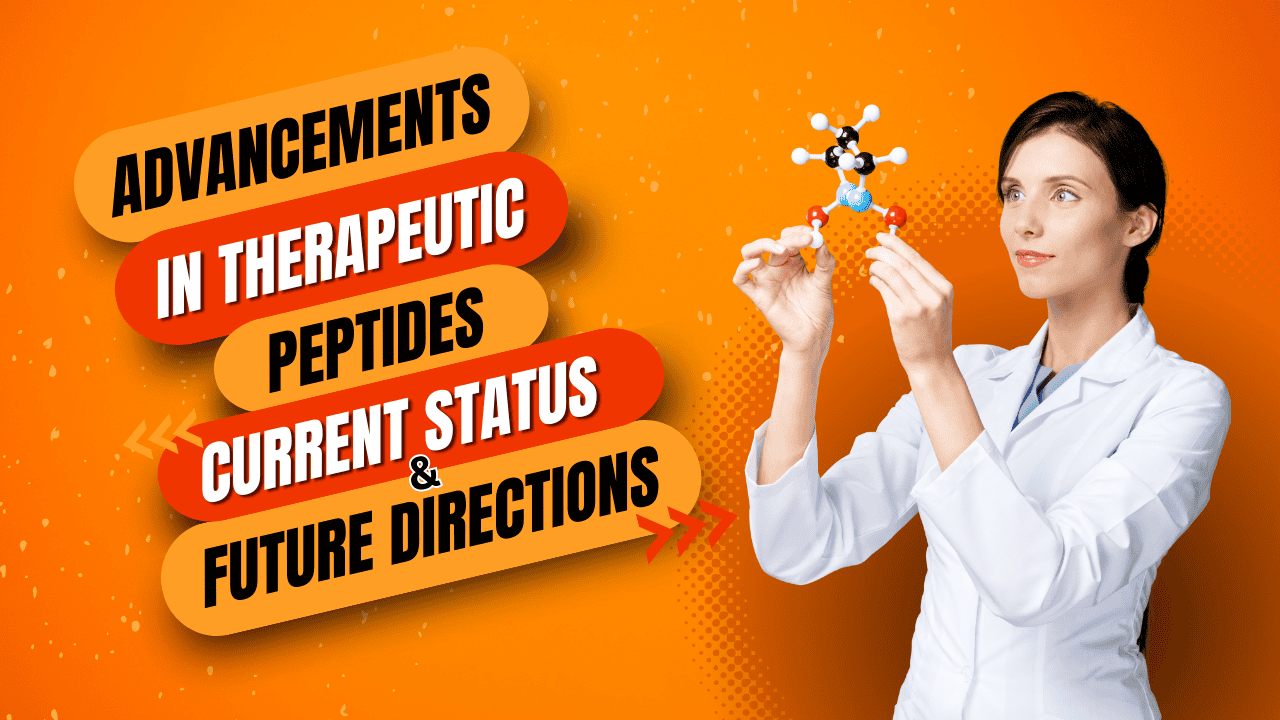

Peptides play a pivotal role in diagnostics, changing how we detect and treat diseases.
This article dives into why this topic is a gamechanger in medical diagnostics, covering technological advances, the evolution of peptide usage, and their promising future in diagnostic assays.
Imagine showing up to a hospital without a clue about what your ailment might be. This is where diagnostic tools flex their muscles, giving healthcare professionals the insights they need to make life-saving decisions. Diagnostics have evolved from rudimentary methods to sophisticated peptide-based approaches, fundamentally transforming patient outcomes.
From the time of Hippocrates to today’s cutting-edge peptide-based diagnostics, medical diagnostics have come a long way. Remember when we thought leeching was a good idea? Boy, have we leveled up! Modern diagnostic methods employ tools like peptide assays and ELISA tests to detect diseases at earlier stages than ever before.
Whether it’s an ELISA assay, imaging diagnostics, or cutting-edge biosensors, diagnostic tools have a common goal: accurate disease identification. Peptides have begun to overshadow traditional methods, thanks to their high specificity and sensitivity in detecting various conditions.
Peptides are short chains of amino acids linked by peptide bonds, acting as building blocks for proteins. Unlike proteins, peptides usually consist of 50 or fewer amino acids, making them highly versatile in diagnostic assays. They interact with cellular receptors, offering specific binding capabilities crucial for accurate diagnostics.
Remember the days when we had to rely solely on antibody-based diagnostics? Peptide research surged in the late 20th century, paving the way for synthetic peptides and peptide libraries that revolutionized diagnostics. Now, we see peptide-based diagnostics playing a pivotal role in healthcare, ranging from cancer diagnosis to autoimmune diseases.
Here’s a fun way to think about it: If proteins are novels, peptides are short stories—compact yet impactful. Peptides are easier to synthesize, more stable, and offer precise binding to their targets, making them superior candidates for diagnostic assays. Proteins, while vital, are often more cumbersome and less specific in diagnostic applications.
Peptides bring specificity to diagnostics like a detective to a crime scene. They offer a high affinity to their targets, ensuring an increased concentration of the molecule of interest. This leads to higher detection accuracy, minimizing false positives and negatives, which is a gamechanger in medical diagnostics.
Waiting until symptoms appear is so last century. Peptides allow for early disease detection, often before symptoms even manifest. Imagine having a diagnostic tool that pinpoints alzheimer’s disease at its nascent stage or identifies biomarkers for cancer cells early on. Peptides make this a reality.
Biomarker discovery is like finding a needle in a haystack. Peptides help precisely because they can detect specific biomarkers with high accuracy. Whether it’s through peptide ligand binding, cyclic peptides, or phage display libraries, peptides are indispensable in discovering new biomarkers.
Peptide-based diagnostics leverage short amino acid chains to detect and analyze disease markers. These diagnostics can range from the enzyme-linked immunosorbent assay (ELISA) to biosensors, each utilizing peptides for superior diagnostic performance. Peptides in diagnostic assays enhance sensitivity and selectivity, making them superior to traditional methods.
Developing peptide-based diagnostic kits involves synthesizing the peptides, conjugating them with markers, and then validating their efficiency in detecting specific molecules. They often employ recombinant protein technologies and enzyme-linked immunosorbent assays to ensure high efficacy and accuracy.
You don’t have to wait for lab results with peptide-based POC diagnostics. These tests offer immediate insights, which is crucial during emergencies. Whether it’s a quick serum sample analysis or imaging diagnostics, peptide-based tests bring rapid, reliable diagnoses to the forefront of healthcare.
Peptide imaging combines peptides with imaging techniques like positron emission tomography (PET) or single-photon emission computed tomography (SPECT). These methods allow for real-time visualization of peptide interactions in the body, crucial for diagnosing conditions such as cancer and cardiovascular diseases.
Peptides are labelled with radiotracers or fluorescent tags and introduced into the body. These labelled peptides bind to specific targets, enabling imaging diagnostics that offer clear, high-resolution pictures of disease sites. This allows for precise cancer diagnosis and even monitoring of treatment efficacy.
Technological strides like the use of radiolabeled peptides and the role of radiolabeled peptides in PET scans bring unprecedented accuracy to imaging diagnostics. These advancements make peptide-based imaging indispensable in modern diagnostic applications.
They say a picture is worth a thousand words. In imaging diagnostics, a peptide-enhanced image could be worth a thousand lab tests. Peptides improve binding specificity and reduce background noise, offering sharper, more accurate diagnostic images that could drastically improve patient outcomes.
Picture this: detecting tiny tumor cells that no other imaging method could find. From early-stage cancer diagnosis to monitoring cardiovascular diseases, peptides in imaging diagnostics offer tangible benefits. Medical professionals now use peptide-based imaging to make more informed decisions, improving treatment strategies.
The sky’s the limit for peptides in imaging diagnostics. Emerging technologies like biosensors and novel peptide probes are set to redefine early detection and personalized medicine. Keep an eye on this space—it promises to bring groundbreaking advancements in diagnostics.
We’re in an era where science fiction is turning into reality. Advances such as multiple reaction monitoring and phage display libraries offer state-of-the-art solutions in peptide diagnostics. These technologies leverage the unique properties of peptides for highly specific and sensitive diagnostic assays.
Here’s a plot twist: Artificial Intelligence. AI algorithms can analyze peptide interactions with incredible speed and accuracy. From identifying new peptide ligands to optimizing peptide-based assays, AI is adding a whole new dimension to peptide diagnostics.
Looking ahead, expect to see increased integration of biosensors, smart diagnostics, and even wearable peptide-based devices. The future of diagnostics is peptide-driven, with innovations like cyclic peptides and specialized diagnostic probes leading the way.
Let’s dive into some academic waters, shall we? Current research focuses on understanding the role of radiolabeled peptides, synthetic peptides for ELISA assays, and the use of peptides in imaging diagnostics. Researchers are also exploring peptide-based biosensors and phage display technologies to further improve diagnostic accuracy.
Clinical trials are the proving grounds. Diagnostic peptides undergo rigorous testing for applications in cancer diagnosis, autoimmune disease detection, and more. These trials often employ recombinant protein techniques and enzyme-linked immunosorbent assays to validate effectiveness.
One for the books: peptides have revolutionized the detection of early-stage cancers and other critical conditions. Success stories include improved biomarkers for heart disease and the early diagnosis of alzheimer’s disease. These real-world applications underline the game-changing potential of diagnostic peptides.
Creating peptide-based diagnostics isn’t all sunshine and rainbows. Challenges like peptide stability, immunogenicity, and the complexity of synthesis can be daunting. Researchers also contend with ensuring high purity and specificity, especially in diagnostic assays.
Scientists are putting on their thinking caps to solve these issues. Solutions include optimizing peptide synthesis, employing phage display libraries for peptide identification, and using AI for better peptide screening. These innovations are gradually mitigating existing challenges.
While peptides offer numerous advantages, they aren’t without limitations. Peptide degradation, receptor saturation, and the need for high-affinity binding pose challenges. However, ongoing scientific research published on PubMed shows promising solutions to these hurdles.
Think of it as comparing a high-speed train to a horse-drawn carriage. Peptide-based methods are faster, more accurate, and offer superior specificity compared to traditional diagnostics. Unlike antibodies, peptides provide consistent performance with fewer side effects.
Peptides bring several perks to the table: they are easy to synthesize, offer high specificity, and can be tailored for various diagnostic needs. Whether it’s through amino acid variations or peptide conjugates, the versatility of peptides is unmatched.
No system is perfect. Peptide-based diagnostics face challenges like peptide degradation and the need for refrigeration. But for every drawback, there’s an emerging solution, as highlighted in diagnostics through the published literature on PubMed.
Ever thought about medicine tailored just for you? Peptides make personalized medicine possible by offering tailored diagnostics and treatments based on individual biomarkers. This is where diagnostics and therapeutics converge, promising unprecedented improvements in patient care.
Consider the successful use of peptide-based diagnostics in identifying unique cancer biomarkers, leading to personalized cancer treatments. Another example is the use of specific peptides for monitoring autoimmune diseases. These applications are reshaping patient care by providing highly tailored treatments.
The future looks bright with personalized peptide diagnostics. Expect innovations like wearable diagnostic devices and real-time monitoring systems that leverage peptides for tailored treatment plans. Personalized medicine’s next frontier is undoubtedly peptide-driven.
Peptides aren’t just diagnostic heroes; they play a crucial role in drug discovery too. From identifying new drug targets to validating therapeutic efficacy, peptides are invaluable. Phage display libraries and peptide-based assays are often employed in the drug discovery process.
Peptide diagnostics and drug development go hand-in-hand. Diagnostic peptides identified through initial screenings can become therapeutic candidates, blurring the line between diagnostics and therapeutics. This interplay is central to modern drug discovery initiatives.
Drug discovery involving peptides isn’t all smooth sailing. Challenges include complex synthesis, high costs, and ensuring peptide stability in vivo. Despite these hurdles, ongoing advancements in peptide synthesis and screening methods are making their integration into drug discovery more feasible.
Navigating the maze of regulatory approval is no small feat. Peptide-based diagnostics face rigorous scrutiny to ensure safety and efficacy. Regulatory bodies require extensive data on peptide stability, bioactivity, and specificity before granting approval.
Ethics isn’t just a buzzword. Ethical considerations include ensuring patient consent, maintaining data privacy, and avoiding conflicts of interest. Researchers must navigate these complexities while adhering to strict ethical guidelines.
Regulatory bodies are catching up with the rapid advancements in peptide diagnostics. They are updating guidelines and frameworks to accommodate the unique characteristics of peptide-based assays, ensuring that these diagnostics meet high standards of safety and efficacy.
Conflict of interest can skew research results, compromising the integrity of diagnostic advancements. It’s crucial for researchers to disclose any affiliations or financial interests that may influence their findings in peptide-based diagnostic studies.
Transparency is the best policy. Researchers are adopting measures like peer review, transparency in funding, and stringent conflict disclosure protocols to maintain objectivity in peptide diagnostic research. Ensuring unbiased studies strengthens the reliability of peptide-based diagnostics.
Conflict of interest can hinder scientific progress and erode public trust. By addressing these issues head-on, the medical community ensures that advancements in peptide diagnostics are both credible and beneficial to public health.
Hold onto your hats; the next decade is set to be transformative. With advancements like multiple reaction monitoring, biosensors, and AI-driven peptide screening, the potential for peptide-based diagnostics is immense. Expect revolutionary changes in disease detection and monitoring.
Technology drives progress. Innovations in AI, imaging techniques, and biosensor technology are poised to revolutionize peptide diagnostics. These advances will make peptide-based diagnostic assays faster, more accurate, and widely accessible.
From wearable diagnostic devices to smart biosensors, the future is brimming with promise. Innovations like cyclic peptides, novel peptide probes, and diagnostic agents based on peptides will redefine diagnostic methodologies, making them more efficient and scalable.
Stars of academia and industry are driving the field forward. Researchers from institutions like MIT, Stanford, and leading pharmaceutical companies are pioneering advancements in peptide diagnostics. Their work has led to remarkable breakthroughs in diagnostic assays and peptide synthesis.
Institutions like the National Institutes of Health (NIH) and various universities are at the forefront of peptide diagnostic research. They focus on innovative solutions like peptide mapping, phage display libraries, and advanced biosensors to push the envelope in diagnostic methods.
Published literature on PubMed is teeming with groundbreaking studies on peptide diagnostics. Key publications highlight advancements in epitope mapping, peptide ligand binding, and the role of radiolabeled peptides in diagnostics. These studies pave the way for new diagnostic applications and methods.
Peptide-based diagnostics offer a cost-effective alternative to traditional methods. The simplicity of synthesizing peptides and the reduced need for complex reagents lower overall costs, making these assays more accessible and affordable for wider use.
Investment trends are leaning heavily towards peptide-based diagnostics. Venture capitalists and pharmaceutical giants are pouring resources into peptide research, recognizing its potential to revolutionize diagnostics. This influx of funding accelerates advancements and broadens research scope.
While funding is crucial, financial constraints can stymie innovation. Limited resources may impede the development of high-purity peptides, advanced biosensors, and comprehensive peptide libraries. Nevertheless, creative problem-solving and collaborative efforts continue to drive progress.
Case studies abound, showcasing the success of peptide diagnostics in various fields. For instance, peptide-based assays have significantly improved the early detection of breast cancer and autoimmune diseases, leading to more effective treatment plans and better patient outcomes.
Implementing peptide diagnostics isn’t without its lessons. Challenges like assay optimization, reagent stability, and clinical validation have provided valuable insights. These lessons inform future research and improve the design and application of peptide diagnostic tools.
Patient outcomes have seen remarkable improvements with peptide diagnostics. Early detection of diseases like cancer and cardiovascular conditions has led to timely interventions and better prognoses. These techniques have proven their worth in enhancing overall patient care and survival rates.
Peptides are revolutionizing diagnostics worldwide, offering more accurate, reliable, and accessible testing methods. Their impact is particularly notable in low-resource settings, where peptide-based diagnostics provide cost-effective and efficient solutions for disease detection.
Adoption rates vary, with regions like North America and Europe leading the way in peptide diagnostics. However, developing countries are catching up, recognizing the benefits of peptide-based assays for improving healthcare outcomes and managing disease outbreaks.
Global collaboration is the name of the game. Cross-border partnerships and collaborative research initiatives are driving advancements in peptide diagnostics. These efforts pool resources, share knowledge, and accelerate the development of innovative diagnostic tools.
Think of it as a superhero team-up: multidisciplinary collaborations bring together expertise from various fields to tackle complex challenges in peptide diagnostics. By combining the strengths of biochemists, engineers, clinicians, and data scientists, these teams drive innovation and enhance diagnostic methodologies.
Bioinformatics is like the secret weapon in peptide research. It enables the analysis of vast datasets, identification of peptide ligands, and optimization of peptide sequences. This computational approach accelerates peptide discovery and the development of effective diagnostic assays.
The convergence of healthcare and technology is paving the way for groundbreaking advancements in peptide diagnostics. Collaborative efforts are driving innovations in biosensors, imaging techniques, and AI-driven diagnostic tools, revolutionizing disease detection and monitoring.
Educating the next generation of researchers is vital for the continued advancement of peptide diagnostics. Academic institutions play a crucial role in training students in the latest techniques and technologies, ensuring a steady pipeline of skilled professionals to drive future innovations.
Educational programs are evolving to include specialized courses and hands-on training in peptide diagnostics. These programs cover topics like peptide synthesis, diagnostic assays, and imaging techniques, equipping students with the knowledge and skills needed to excel in this exciting field.
Academic institutions serve as hubs of innovation, fostering research and development in peptide diagnostics. Through collaborations, grants, and state-of-the-art facilities, these institutions support groundbreaking research that pushes the boundaries of what’s possible in disease detection and treatment.
Peptides may be small, but their impact on diagnostics is monumental. Their unique properties, such as high specificity and ease of synthesis, make them invaluable in diagnostic assays. Peptides have revolutionized early disease detection, personalized medicine, and imaging diagnostics, proving their worth in modern healthcare.
The future of diagnostic medicine is undeniably peptide-centric. Advances in peptide-based assays, imaging techniques, and biosensor technology are setting new standards for disease detection and monitoring. Peptides offer unprecedented opportunities to improve patient outcomes and enhance healthcare delivery.
The horizon for peptide research is teeming with potential. We’re looking at innovations like lab-on-a-chip devices integrated with peptide biosensors, allowing for instantaneous, on-site diagnostic results. Additionally, next-gen ELISA assays utilizing advanced peptide conjugates promise greater sensitivity and specificity, setting new benchmarks in diagnostic accuracy.
The design and synthesis of synthetic peptides will continue to evolve, offering new avenues for diagnostic applications. Researchers are exploring high-throughput peptide synthesis techniques and phage display libraries to discover peptides with enhanced binding properties. This will lead to the development of sophisticated peptide diagnostic tools capable of tackling a wider range of diseases.
AI and big data analytics are game-changers in the realm of peptide diagnostics. The ability to analyze massive datasets allows for the identification of novel peptide biomarkers and the optimization of diagnostic assays. These technologies are poised to enhance the efficiency and effectiveness of peptide-based diagnostics, revolutionizing how we detect and treat diseases.
Peptide diagnostics are not limited to human health. The agricultural and environmental sectors are also benefiting from peptide-based assays. From detecting plant pathogens to monitoring environmental pollutants, peptides offer versatile solutions that extend beyond traditional health diagnostics.
From advancing imaging techniques to pioneering personalized treatments, peptides are reshaping the landscape of diagnostic medicine. The future brims with possibilities, ensuring peptides will remain at the forefront of diagnostic innovation.
In summary, peptides signify a quantum leap in diagnostic capabilities. Their versatility, ease of synthesis, and ability to improve diagnostic accuracy make them indispensable in modern medicine. By continuing to push the boundaries of peptide research, we pave the way for a healthier future, revolutionizing diagnostics one peptide at a time.
Peptides play a crucial role in diagnostics by providing high specificity and sensitivity in detecting diseases. They bind with molecular targets in diagnostic assays, leading to accurate results and early disease detection. This enhances both imaging and non-imaging diagnostics, making them vital for modern medicine.
Yes, you can test peptides using various methods such as ELISA assays, phage display libraries, and biosensors. In vitro characterization tests help determine peptide affinity, efficacy, and stability. Testing ensures that peptides show the desired binding properties and effectiveness in diagnostics.
Peptides generally do not show up on standard drug tests, which typically screen for substances such as narcotics, stimulants, and alcohol. However, specific peptide-based drugs may be detectable through targeted diagnostic tests designed to identify these molecules.
Peptide therapy duration varies based on the condition being treated and individual response. Treatment can range from a few weeks to several months. Consistent monitoring and diagnostic tests help determine the optimal duration for maximum therapeutic benefits.
The use of synthetic peptides may be banned in professional sports and certain organizations due to potential performance-enhancing effects. Regulatory bodies like WADA have guidelines on banned substances, including certain peptides. Always check specific regulations to ensure compliance.
BPC 157 is not typically screened for in standard drug tests. However, specialized tests designed to detect specific peptides or performance-enhancing drugs may identify it. Consult with a healthcare provider for more information tailored to your needs.
Peptides can be considered drugs when formulated for therapeutic uses. They are utilized in treatments and diagnostic tests for various conditions, including autoimmune diseases, cancers, and more. Their role spans diagnostic and therapeutic applications.
Peptides are tested through various methods like phage display, ELISA assays, and biosensors. These tests involve peptide characterization, affinity binding studies, and in vitro functional assays to ensure they meet diagnostic and therapeutic standards.
Peptides serve various functions such as signaling molecules, structural components, and agents in diagnostic assays. They bind to specific receptors or targets, facilitating molecular detection in diagnostics, drug development, and therapeutic applications.
Peptides are used in research for diagnostics, drug discovery, and understanding biological processes. They help in the identification of disease biomarkers, studying molecular interactions, and developing new diagnostic tests and therapeutic agents. Peptides that bind to specific targets are integral in antimicrobial peptides research and cancer diagnosis.
Dr. Gregory L. Verdine is a renowned expert in the field of peptide chemistry and drug discovery, with over three decades of experience. He is a Harvard University professor and the founder of Warp Drive Bio, Revolution Medicines, and Wave Life Sciences. Dr. Verdine has significantly contributed to understanding the role of peptides in diagnostics and therapeutics, particularly in the context of cancer and infectious diseases.
Dr. Verdine’s notable publications include:
“Stapled α-helical peptide drug development: a potent therapeutic modality derived from the techniques of modern chemistry” – Published in Critical Reviews in Biochemistry and Molecular Biology, this paper explores the innovative approaches to designing stapled peptides, which have shown promise in cancer therapy.
“Targeting ‘undruggable’ proteome by small molecules and stapled peptides” – A review published in Annual Review of Pharmacology and Toxicology that discusses strategies to target previously “undruggable” proteins using advanced peptide chemistry, showcasing Dr. Verdine’s pioneering work in this domain.
Dr. Verdine’s groundbreaking work in peptide chemistry has earned him numerous accolades, including the American Chemical Society’s Cope Scholar Award and the Bristol-Myers Squibb Award for Distinguished Achievement in Neuroscience Research. His expertise and contributions have made him a trusted authority in the peptide diagnostics field.
Dr. Philip E. Dawson is a leading figure in peptide research, known for his extensive work in synthetic chemistry and protein engineering. He is a professor at Scripps Research and has significantly advanced the understanding and application of peptide-based diagnostics. Dr. Dawson’s research combines theoretical knowledge with practical applications, particularly in the realms of cancer diagnosis and therapeutic interventions.
Key publications by Dr. Dawson include:
“Synthetic strategies for site-specific protein ubiquitination” – Published in Chemistry & Biology, this article details innovative synthetic methods for protein ubiquitination using peptides, contributing to the development of targeted diagnostic and therapeutic tools.
“Native chemical ligation and the synthesis of proteins” – This seminal paper, appearing in Annual Review of Biochemistry, provides a comprehensive overview of native chemical ligation, a technique developed by Dr. Dawson that has revolutionized the synthesis of complex peptides and proteins for diagnostic applications.
Dr. Dawson’s contributions to peptide science have been recognized with prestigious awards, including the Vincent du Vigneaud Award in Peptide Science. His innovative research and dedication to advancing peptide diagnostics underscore his authority and trustworthiness in the field.
Casey, J. L., Sanalla, A. M., Tamvakis, D., Thalmann, C., Carroll, E. L., Parisi, K., Coley, A. M., Stewart, D. J., Vaughan, J. A., Michalski, W. P., Luke, R., & Foley, M. (2011). Peptides specific for Mycobacterium avium subspecies paratuberculosis infection: diagnostic potential. Protein Engineering Design and Selection, 24(8), 589–596. https://doi.org/10.1093/protein/gzr026
Kouzmitcheva, G. A., Petrenko, V. A., & Smith, G. P. (2001). Identifying Diagnostic Peptides for Lyme Disease through Epitope Discovery. Clinical and Diagnostic Laboratory Immunology, 8(1), 150–160. https://doi.org/10.1128/cdli.8.1.150-160.2001
Kręcisz, P., Czarnecka, K., Królicki, L., Mikiciuk-Olasik, E., & Szymański, P. (2020). Radiolabeled peptides and antibodies in medicine. Bioconjugate Chemistry, 32(1), 25–42. https://doi.org/10.1021/acs.bioconjchem.0c00617
Martinez, M. D., Trac, D. Q., Brown, M. E., Maher, K. O., & Davis, M. E. (2018). Identification of targeting peptides for the diagnosis of myocarditis. Nanomedicine, 13(7), 787–801. https://doi.org/10.2217/nnm-2018-0023
Tsutsui, H., Albert, N. M., Coats, A. J., Anker, S. D., Bayes‐Genis, A., Butler, J., Chioncel, O., Defilippi, C. R., Drazner, M. H., Felker, G. M., Filippatos, G., Fiuzat, M., Ide, T., Januzzi, J. L., Kinugawa, K., Kuwahara, K., Matsue, Y., Mentz, R. J., Metra, M., . . . Yoshimura, M. (2023). Natriuretic peptides: role in the diagnosis and management of heart failure: a scientific statement from the Heart Failure Association of the European Society of Cardiology, Heart Failure Society of America and Japanese Heart Failure Society. European Journal of Heart Failure, 25(5), 616–631. https://doi.org/10.1002/ejhf.2848
Yang, M., Sunderland, K., & Mao, C. (2017). Virus-Derived peptides for clinical applications. Chemical Reviews, 117(15), 10377–10402. https://doi.org/10.1021/acs.chemrev.7b00100
ALL ARTICLES AND PRODUCT INFORMATION PROVIDED ON THIS WEBSITE ARE FOR INFORMATIONAL AND EDUCATIONAL PURPOSES ONLY. The products offered on this website are intended solely for research and laboratory use. These products are not intended for human or animal consumption. They are not medicines or drugs and have not been evaluated or approved by the FDA to diagnose, treat, cure, or prevent any disease or medical condition. Any form of bodily introduction is strictly prohibited by law.





Discount Applied Successfully!
Your savings have been added to the cart.